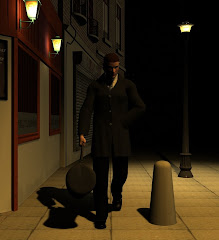
Well, not exactly. To see my friend Cara actually, who may or may not enjoy being called a queen. And certainly not to see Queen: The Musical, though I enjoyed the bombastic Freddie Mercury statue which some lunatic has erected over the theatre doors. I had a very good day out, appreciating as ever London's beauties and architectural vainglory. A few points stuck out:
Our first stop was the British Museum; Cara's first visit, approximately my fifty first. We agreed it was a little like visiting a zoo. It's fantastic seeing the things inside; but the issue of whether they should be there, rather than their homelands, is troubling. The Egyptian rooms, with their monumental statues and columns, reveals looting on a colossal scale. But the heart of the debate is of course the Parthenon a.k.a the Elgin Marbles. The British Museum was considerate enough to give a short explanation of why Greece wants the exhibits back, and why the Museum is sticking onto them. For the first time, though, I noticed that the cards next to many of the headless statues declared “Head in Athens.” Is this part of a slow compromise? One decade all the heads are returned, the next all the left feet, and so on? Or did Lord Elgin do a hasty raid, unpack the bullion at home and realise he'd forgotten some small but important details?
Equally inevitable was our visit to the Tate Modern. Star exhibit is currently Miroslaw Balka's How It Is in the Turbine Hall. It is basically a vast crate, open at one end. You can go inside; but there are no windows and no lights. It gets darker and darker as you progress until all you can see are the pale faces of fellow explorers. Still you blunder on, expecting something to happen. So it does, when you collide into the far wall. The bunf says How It Is is an exploration of knowledge and uncertainty: do you walk into the unknown or retreat towards the familiar? Cara remarked that is shows modern art's immense capacity for suckering people into doing anything. Even walking through an unlit crate until you hit a wall. Other exhibits included a colossal dining table and chairs, and a film of a masked boxer hitting himself in the face then rubbing his genitals. For sheer entertainment, the Tate Modern is better than a day at the circus.
Less uplifting was the walk there. I generally savour the walk along the South Bank from Westminster Bridge to the Tate. There's a fine panorama of buildings across the Thames, some sublime (St Paul's, Somerset House), some grotesque (Portcullis House). The vessels on the river are nicely varied too, with restored navy ships like the HQS Wellington mixing with rusting dredgers and tugs. On the South Bank itself there are treats like Da Kidz Zone under the National Theatre, the graffiti-bedecked ghetto where hoodies try to do flips on their skateboards and fall over, a lot. But the number of Living Statues on the walk has got out of hand. There ought to be a law: only one pink-painted man per five hundred yards. And another: if you're a Living Statue then you're supposed to stand still. Instead, desperate as competition grows, they've started bouncing around and waving at passers-by; and what's the point in spray-painting yourself gold if you're going to do that? Still, I enjoyed the sand sculptures built on one of the Thames' tiny and filthy beaches. A monument to London's artists grabbing the ephemeral and totally bleeding pointless.
On the subject of Living Statues: walking part the Horse Guards Parade, we agreed that these guards had amongst the worst jobs in the world. Imagine having to spend all day totally motionless, not an expression your face, while all around you gurning yahoos prance about photographing themselves next to you. Though The Horse Guards, I thought, have it better than the Beefeaters. At least they can dream of the day when their horse gets restive and kicks some tourist in the knackers. Cara said she couldn't do the job without music, and we decided that their helmets should be redesigned with ear flaps, to conceal the headphones. Still, we conceded, they don't have to actually do anything. They aren't even guarding the buildings any more. Anywhere these toy soldiers are standing to attention with their pikes and sabres, the actual security men will be lurking nearby, submachine guns at the ready. That's the charm of London.

No comments:
Post a Comment